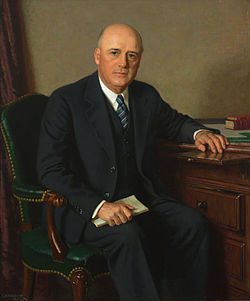| 81st United States Congress | |
|---|---|
80th ← → 82nd | |
 United States Capitol (1956) | |
January 3, 1949 – January 3, 1951 | |
| Members | 96 senators 435 representatives 3 non-voting delegates |
| Senate majority | Democratic |
| Senate President | Vacant (until January 20, 1949) Alben W. Barkley (D) (from January 20, 1949) |
| House majority | Democratic |
| House Speaker | Sam Rayburn (D) |
| Sessions | |
| 1st: January 3, 1949 – October 19, 1949 2nd: January 3, 1950 – January 2, 1951 | |
The 81st United States Congress was a meeting of the legislative branch of the United States federal government, composed of the United States Senate and the United States House of Representatives. It met in Washington, D.C. from January 3, 1949, to January 3, 1951, during the fifth and sixth years of Harry S. Truman's presidency.
Contents
- Major events
- Major legislation
- Treaties
- Hearings
- Party summary
- Senate
- House of Representatives
- Leadership
- Senate 2
- House of Representatives 2
- Caucuses
- Members
- Senate 3
- House of Representatives 3
- Changes in membership
- Senate 4
- House of Representatives 4
- Committees
- Senate 5
- House of Representatives 5
- Joint committees
- Employees
- Legislative branch agency directors
- Senate 6
- House of Representatives 6
- See also
- Notes
- References
The apportionment of seats in this House of Representatives was based on the 1940 United States census.
The Democrats won back the majority in both chambers, and with the election of President Harry S. Truman to his own full term in office, this gave the Democrats an overall federal government trifecta.














